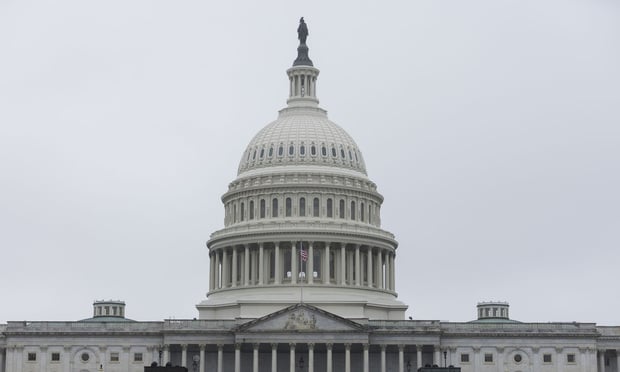Between the government’s tax overhaul, a list of fluctuating ACA regulations and the challenges created by new technology, It’s not going to be an easy year for small businesses. These issues and more made the list of top regulatory issues small businesses will need to be ready to confront in 2018, according to Paychex, Inc.
“With so many regulatory changes and legislative reforms either proposed or slated to take effect in the coming months, it can be challenging for busy small business owners to keep up with where things stand,” says Paychex president and CEO Martin Mucci. “Our summary of the year’s most important regulatory developments is designed to help small business owners understand how new regulations will affect their businesses in 2018.”
What else do small businesses need to worry about this year?

1. Tax reform
The GOP’s tax overhaul included changes to everything from the corporate tax rate to deductions for common business incentives.
According to the report: “Employers will need to implement withholding changes once the Internal Revenue Service (IRS) releases updated tables. The IRS has indicated that the information in the withholding tables will be designed to work with the current W-4 for 2018. The changes to the individual tax code will expire in 2026 without additional Congressional action. … To further reduce the tax burden for these entities, Congress added a deduction of business income for pass-through entities of up to 20 percent, but there are complex requirements and guardrails for the application of this deduction. Businesses should stay tuned as the impacts of this policy evolve.”

2. State reaction to federal tax reform
States that take their cues from the federal tax standards will have a lot of scrambling to do to adjust their own systems and regulations, while other states will be adjusting their own processes to mitigate the effects of federal reforms.
According to the report: “In general, the bulk of the states conform to the Internal Revenue Code (IRC) to some extent – some states directly conform, others conform with carve-outs, and some conform to the code on a specific date. Based on the new tax law, date-specific conformity would require legislative changes if the states choose to conform to the code.
“Along the same lines, each jurisdiction will need to assess the impact of decoupling or following the IRC on their budgets and their constituents, which may lead to withholding changes that could be implemented retroactively in some cases. Other consequences from the federal tax overhaul may require state legislatures to examine how they support their health care markets.”
3. Affordable Care Act (ACA)
The tax bill was also responsible for perhaps the biggest impact on ACA this year: repeal of the individual mandate penalty. But how does that affect employers?
According to the report: “it should be noted that this does not change the filing requirement for the individual mandate. Under the individual mandate, the IRS requires self-insured employers and insurers to report individuals covered by their plan or face penalties. Additionally, other provisions in the ACA, including the employer shared responsibility provision, remain unchanged. Employers should do their due diligence preparing for current year ACA filing obligations and gathering 2018 tax year data for next year’s filing.”

4. Paid leave laws
Order is slowly coming to the hodgepodge of local and state regulations pertaining to paid leave, and that process is expected to pick up in 2018 after New York instituted the first comprehensive paid family leave regulations.
According to the report: “All the paid leave laws, passed or proposed, vary in their complexity, but the family leave laws are the most onerous. Provisions related to employer coverage, employee eligibility, employee/employer notice requirements, recordkeeping, and penalties are found in all paid leave laws. Employee payroll deductions and employer taxes are also prevalent in paid family leave laws. There is also often the need to coordinate these laws and their provisions with other applicable leave laws such as the federal Family and Medical Leave Act. Also on the horizon, a recent proposal in Congress, the Workflex in the 21st Century Act. This legislation, if passed, could pre-empt many of the paid leave laws at state and local levels, where employers elect to voluntarily offer paid leave and flexible work schedules as prescribed in the legislative proposal.”
5. Employee verification
The Trump Administration’s crackdown on immigration policies isn’t going unnoticed by employers. A revised I-9 Form for employment eligibility verification was issued in 2017, a relatively minor adjustment compared to other possibilities on the horizon.
According to the report: “While documentation audits and worksite inspections seemed to level off in 2017, Immigration and Customs Enforcement has warned that it will quadruple the number of worksite inspections in the coming year, consistent with President Trump’s pre-election platform and post-election agenda regarding immigration reform. Additionally, if passed, the Legal Workforce Act introduced in 2017 could eventually phase out the Form I-9 in its current form. Under the proposed legislation, mandatory use of the E-verify system would be phased in for all private employers.” 
6. Overtime regulations
Employers were granted a reprieve last year with the delay of new FLSA overtime standards introduced under the Obama administration. But the issue isn’t dead yet.
According to the report: “Activity related to federal overtime regulations will continue in 2018. Over the summer, the Wage and Hour Division of the U.S. Department of Labor released a Request for Information soliciting public comments on the existing overtime regulations that define and delimit exemptions from the federal Fair Labor Standards Act’s minimum wage and overtime requirements for certain white-collar employees. … While employers are reminded to continue their compliance with the existing federal overtime regulations, as well as applicable state requirements that may incorporate salary levels that exceed the federal level, new federal overtime regulations could be adopted and in place by early 2019.”

7. Pay equity
Another regulation that saw a delay in 2017 was the addition of wage and hours data to the EEO-1 form. Whether these additions will be revisited remains to be seen, but other changes to the form will take effect in 2018.
According to the report: “Employers should note that the changes made to the submission date of the EEO-1 (March 31, 2018) and the “workforce snapshot period” (4th calendar quarter of 2017) are in effect for 2018 submissions. ... Pay discrimination based on gender also continues to be an area of great concern for states looking to more aggressively address recognized and documented gender pay gaps and to ensure pay equity in the workplace. States, and even some local jurisdictions, will likely continue to push through legislative proposals in 2018 to ban or limit the collection and use of salary and benefits history information in the hiring process.”
8. Privacy
After a slew of high-profile data breaches in 2017, information security is top-of-mind for many businesses, not to mention regulators. New York and Colorado are leading an expected trend in increased regulations and enforcement of data security standards.
According to the report: “States’ attorneys general and federal regulatory agencies, such as the Federal Trade Commission and the Consumer Financial Protection Board, readily use their legal authority to investigate and bring enforcement actions against businesses for data security failures that lead to data breaches. … Additionally, with the increased adoption of biometric technology in the private sector, privacy laws regulating the collection and use of biometric data, such as those in Illinois, Texas, and Washington, may become nationwide industry standards.”

9. State and municipality retirement plans
Myriad issues are driving more states to create (or consider) state-run retirement plans. Oregon rolled out its OregonSaves program last year, and programs are expected to roll out over the next two years in Illinois, Connecticut, California, Maryland, Vermont and Washington.
According to the report: “Employer requirements vary by state, with some requiring employer participation based on employer size and others keeping employer participation voluntary. Auto-enrollment of employees is also a state-specific provision. … Businesses not currently offering their employees a retirement plan will need to watch individual state developments closely.” 
10. Payment evolution
Employers with outdated payroll systems may find themselves in a bind when it comes to recruiting and retaining talent. Faster payment capabilities, including daily paychecks and near-real-time payments, are growing in popularity and utilization and becoming more accessible to small-business owners.
According to the report: “In September of 2017, the second phase of Same Day ACH, permitting debits up to $25,000, became a payment option, giving cash flow management a boost. ... Demand for faster and more convenient options for paying out tips to employees is expected to grow in 2018. Small businesses should work closely with their financial institution, payment processor, and vendors to identify opportunities as the availability of faster payments develops.”
Complete your profile to continue reading and get FREE access to BenefitsPRO, part of your ALM digital membership.
Your access to unlimited BenefitsPRO content isn’t changing.
Once you are an ALM digital member, you’ll receive:
- Breaking benefits news and analysis, on-site and via our newsletters and custom alerts
- Educational webcasts, white papers, and ebooks from industry thought leaders
- Critical converage of the property casualty insurance and financial advisory markets on our other ALM sites, PropertyCasualty360 and ThinkAdvisor
Already have an account? Sign In Now
© 2025 ALM Global, LLC, All Rights Reserved. Request academic re-use from www.copyright.com. All other uses, submit a request to [email protected]. For more information visit Asset & Logo Licensing.








